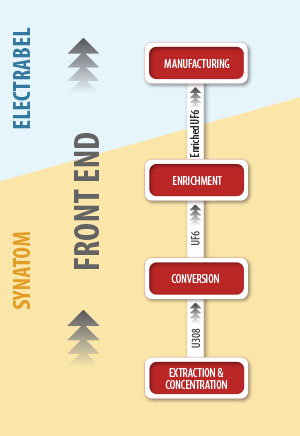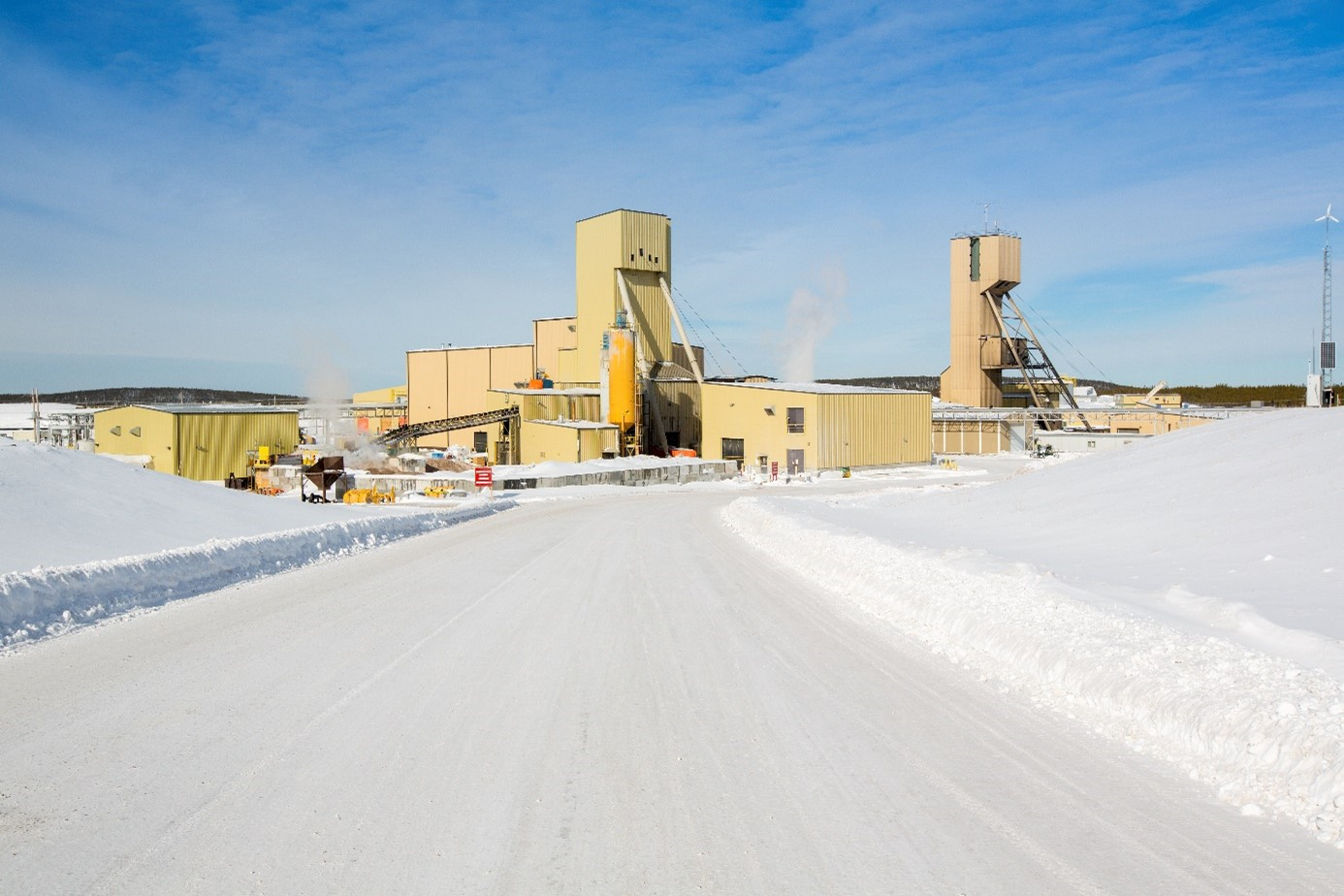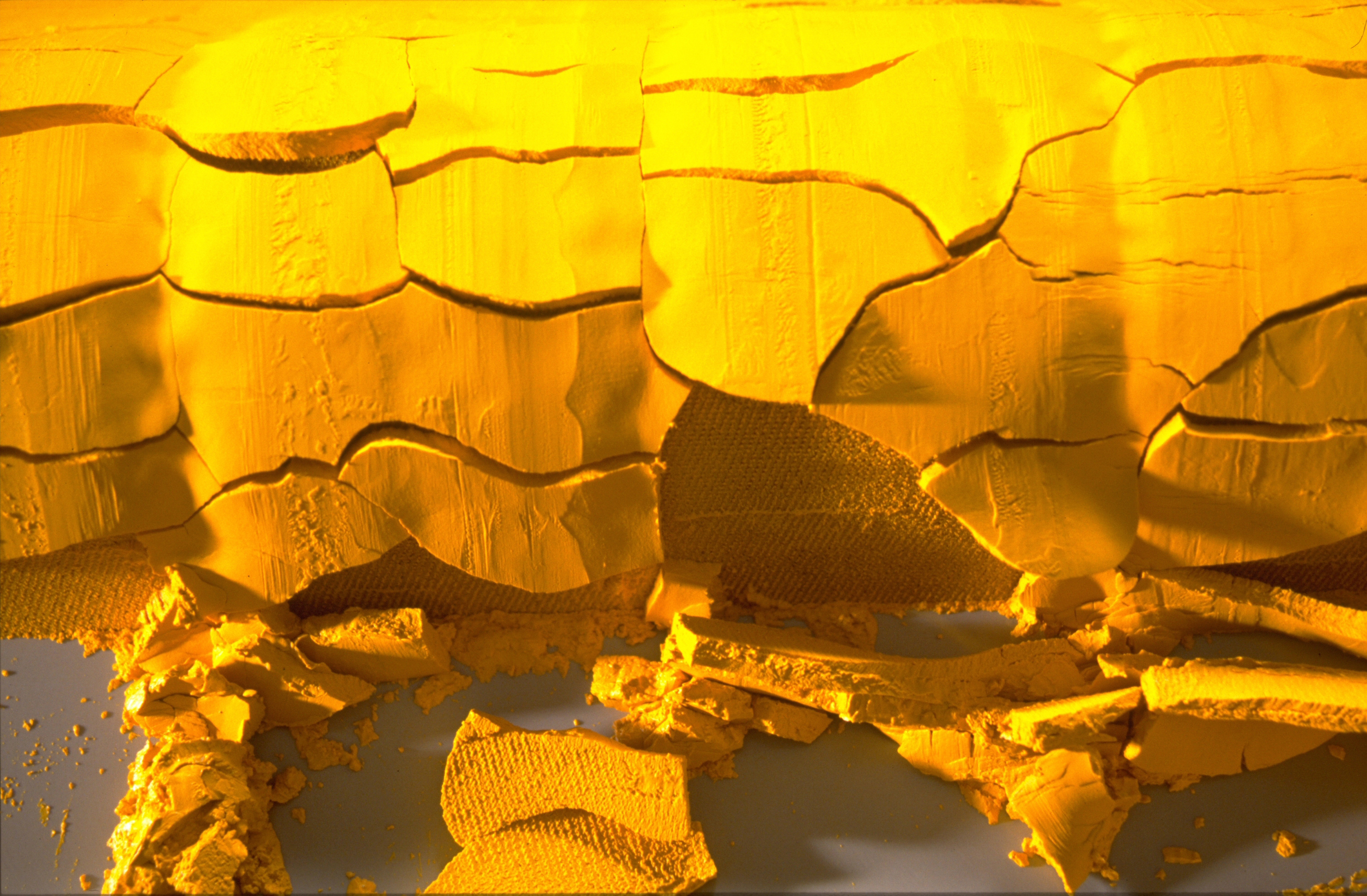The front-end of the nuclear fuel cycle

The front-end of the nuclear fuel cycle covers all operations from the extraction of uranium ore to the supply of enriched uranium to the manufacturer of nuclear fuel assemblies.

Cigar Lake Mine Site in Canada (photo courtesy of Cameco Corporation)
From extraction to uranium concentrate
Uranium is a metal and is quite commonly found in the earth’s crust in ores that are mined in open-pit mines or in underground galleries. A new technology, called in situ leaching has become increasingly popular in recent years. Using this process, metals, such as uranium, are dissolved directly where they are found. Today, almost half of the world’s production is obtained through in situ leaching.
The main uranium producing countries are Kazakhstan, Canada, Australia, Niger, Namibia, Russia, Uzbekistan, the United States, China, and Ukraine.
Uranium is extracted from the ore by a series of processes that produce highly concentrated uranium. The result is yellow cake, a yellow powder that contains about 75% uranium, or 750 kg of uranium oxide per tonne. Yellow cake is then refined further, to obtain almost pure uranium in the form of Triuranium octoxide (U3O8).

Yellow cake on belt filter © Areva P. Lesage
Yellow cake is converted to uranium hexafluoride
During the conversion phase, yellow cake is converted into pure uranium hexafluoride (UF6). This gas is then compressed and cooled to make it liquid, after which it can be transported to the enrichment plant using special containers where the gas is kept cool to maintain a solid state.
Only a limited number of countries provide conversion services: Canada, France, the United States, Russia, and China have this type of facilities.

Handling a container of uranium hexafluoride at the Orano site in Tricastin
(Copyright: Orano, LARRAYADIEU ERIC)
Enrichment
Prior to enrichment, 1 kg of natural uranium is composed of 990 grams of uranium 238, 7 grams of uranium 235 and almost 3 grams of uranium 234. Only uranium 235 is fissile but, at 0.7%, its concentration is too low to be used in the pressurized water reactors (PWR) used in Belgium’s nuclear power plants. To power those pressurized water nuclear reactors, fuel is required with a uranium 235 content of between 3 and 5%. Only isotope 235 can undergo nuclear fission, which releases energy.
Today, the centrifugation enrichment method has completely supplanted the gaseous diffusion technique which is much too energy intensive.